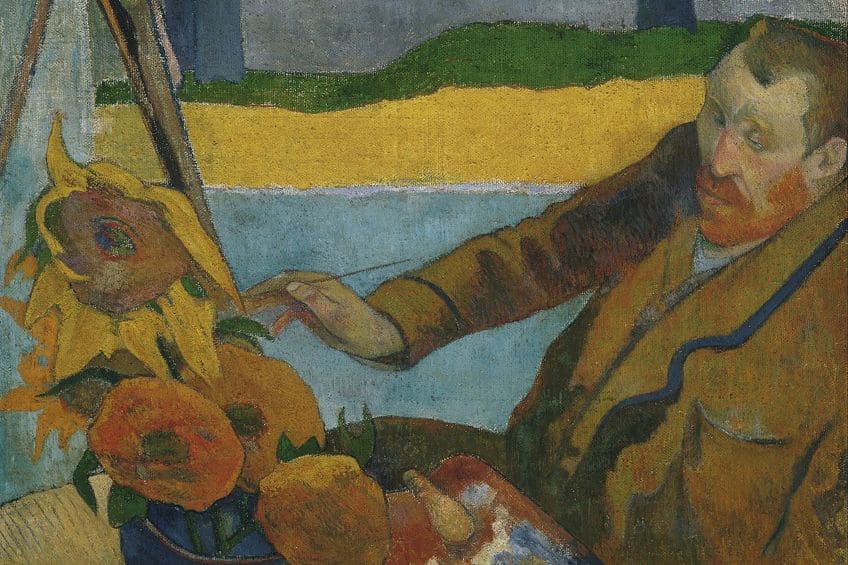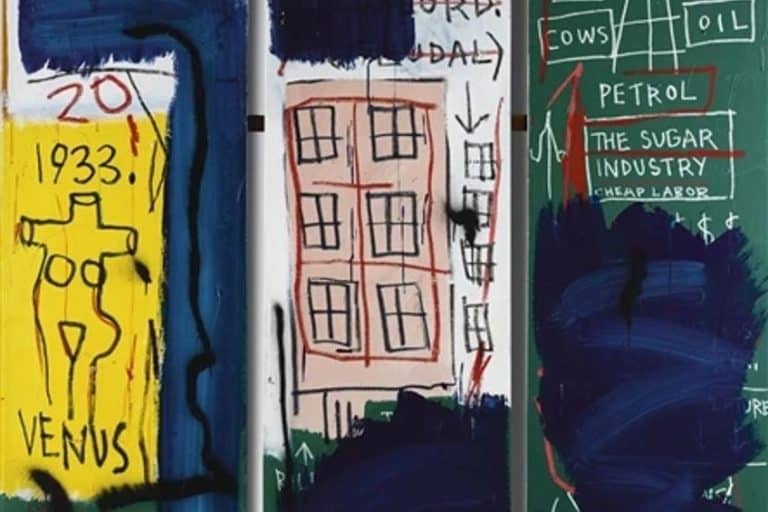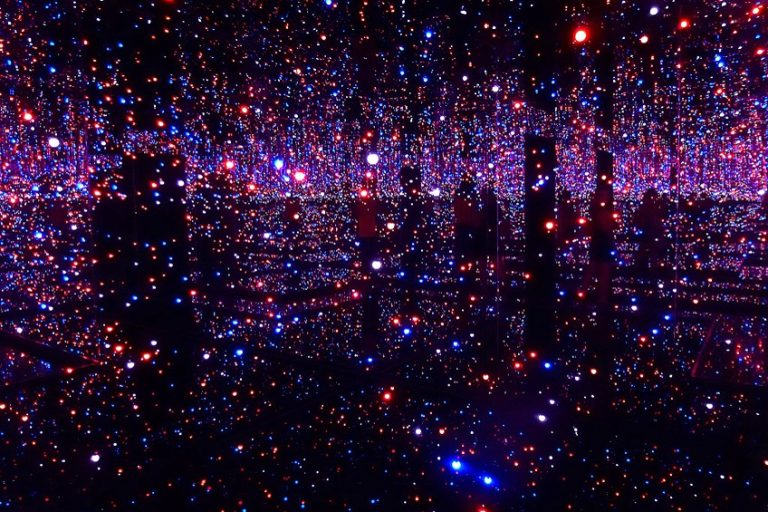Vincent van Gogh and Paul Gauguin’s Friendship – A Collaboration
Vincent van Gogh and Paul Gauguin’s friendship is an iconic chapter in the annals of art history, characterized by passion, collaboration, and eventual fracture. Emerging in the vibrant milieu of late 19th-century Europe, their bond epitomized the bohemian spirit of the time. Through shared ideals and artistic fervor, they ignited a creative dialogue that fueled some of their most celebrated works. Yet, their friendship was marked by tumultuous dynamics and clashing personalities, culminating in a dramatic rupture that reverberated through the art world. Despite its brevity, the alliance between Van Gogh and Gauguin remains a compelling narrative of artistic camaraderie and divergence.
Table of Contents
Key Takeaways
- Van Gogh and Gauguin shared a significant, yet tumultuous friendship that affected their artistic development.
- The artists’ time living together in Arles was brief but crucial in the history of post-Impressionist art.
- Their legacy continues to impact the art world, underscoring the importance of their relationship despite its eventual breakdown.
The friendship between Vincent van Gogh and Paul Gauguin is one of the art world’s most famous and complex relationships. Both post-Impressionist artists, Van Gogh and Gauguin shared a brief but intense period of collaboration that profoundly influenced their work. During their time together, they pushed each other creatively, and their intense discussions on art led to some of the movement’s most innovative techniques and styles. Vincent van Gogh and Paul Gauguin’s relationship was founded on mutual respect for each other’s artistic visions.
They initially connected through Van Gogh’s brother Theo, an art dealer, who provided financial support to Gauguin, fostering a platform for the two artists to communicate and eventually meet in Paris.

Mutual Influence and Artistic Collaboration
Van Gogh and Gauguin first met in Paris in 1887, where their artistic exchange began. Van Gogh was particularly influenced by Gauguin’s use of color and symbolism. Their collaboration was evident in their artwork as they both searched for new means of expression beyond the confines of traditional Impressionism.
Gauguin’s bold colors and synthetist style contrasted with Van Gogh’s swirling brushstrokes, yet the exchange nurtured their development as Post-Impressionist artists.
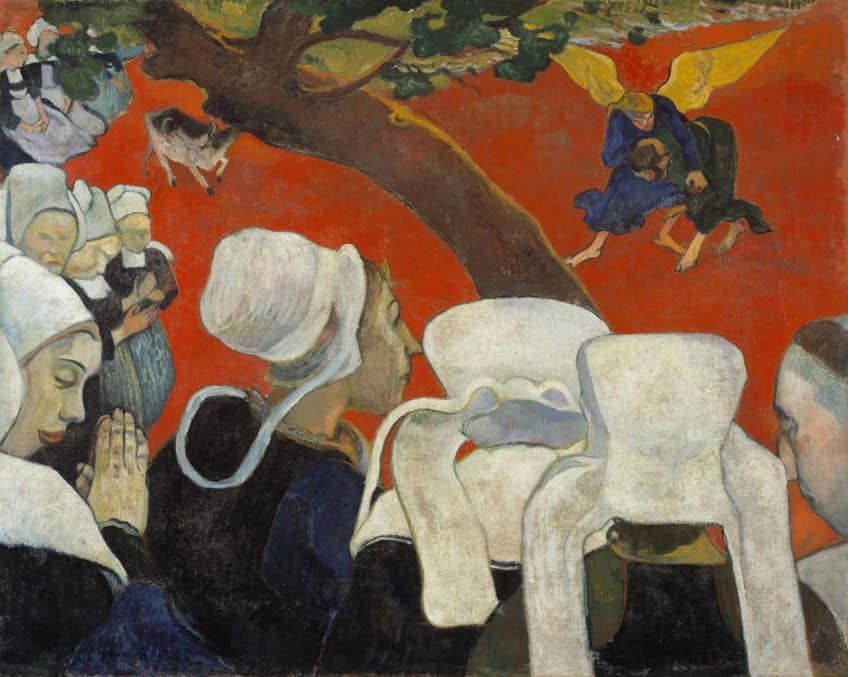
Vincent van Gogh’s noted works influenced by Gauguin were Sunflowers (1888) and The Night Café (1888), while Paul Gauguin’s works showcased their mutual influence in Vision After the Sermon (1888) and The Yellow Christ (1889).
Correspondence and Deepening Bond
The artists’ relationship deepened through letters exchanged before their time living together. Their correspondence was marked by passionate discussions about art, sharing ideas and critiques. This exchange solidified their bond and aspirations to create an artist community. Despite being geographically separate—van Gogh in Arles and Gauguin in Brittany—they maintained a prolific exchange of letters discussing their evolving styles and shared ideals.
In their correspondence, Vincent van Gogh and Paul Gauguin explored themes like artistic techniques, color theory, and the role of emotion in art.
Their letters reveal a shared fascination with capturing human experience on canvas and unraveling the mysteries of artistic creation. Through their dialogue, they probed the depths of their emotions and visions, shaping their respective styles and enriching the art world with their insights and experiments. Through their letters, Gauguin agreed to join Van Gogh in Arles in hopes of establishing a studio of the South, where they aimed to live and work together, sharing and promoting avant-garde ideas. It was Van Gogh’s brother Theo who, understanding the potential of this partnership, helped to facilitate Gauguin’s move by providing financial assistance.
Life in Arles: The Yellow House Experiment
In 1888, Vincent van Gogh rented a space in Arles, envisioning the Yellow House as a utopian studio for artists. This ambition temporarily materialized when Paul Gauguin joined him, leading to a pivotal period of collaboration and conflict in their careers.

Challenges and Creative Exchanges
The cohabitation of Van Gogh and Gauguin in the Yellow House was marked by both inspiration and tension. They engaged in heated debates about art, which sometimes escalated to intense arguments. Despite this, the pair managed to exchange ideas and techniques that shaped their works during this period. Gauguin’s influence on Van Gogh led to a bolder, more arbitrary use of color and a shift away from the impressionist movement’s quest for capturing natural light. Van Gogh in turn struggled with mental health challenges, leading to the infamous incident where he severed part of his ear.
This period of cohabitation ended shortly after, as Gauguin left the residence, deeply affecting their relationship.
Iconic Works and Diverging Artistic Visions
While staying at the Yellow House, Van Gogh produced some of his most celebrated paintings, including the Sunflowers series. These works epitomize his signature vibrant color palette and bold brushwork, exemplifying the post-impressionist influence. Gauguin’s works during this time also reflected a departure from Van Gogh’s style, emphasizing a more symbolic and synthetist approach.

Their diverging visions—Gauguin’s abstract tendencies contrasting with Van Gogh’s emotionally charged representations—exemplify the dynamism of the post-impressionist movement, transcending the naturalism of their impressionist predecessors. The Yellow House experiment was a crucible of creativity, yet it underscored the differences between Van Gogh’s and Gauguin’s artistic philosophies, foreshadowing the dissolution of the short-lived Studio of the South.
Tensions and Turmoil: The Breakdown of Their Relationship
In the fall of 1888, the volatile relationship between Vincent van Gogh and Paul Gauguin reached its pinnacle in Arles, France. Their collaboration, driven by mutual respect and the desire to forge new artistic paths, was marred by intense tension and conflict. The two artists held differing views on art; Van Gogh’s expressive, emotion-laden brushstrokes clashed with Gauguin’s more symbolic and conceptual approach. The tension escalated dramatically, manifesting in heated arguments. This tumultuous period was marked by Van Gogh’s deteriorating mental health, which strained their relationship further.
The discord between them culminated in a distressing incident where Van Gogh, in a fit of desperation, mutilated his own ear with a razor. This act of self-harm was a poignant symbol of their fractured relationship and a cry for help from Van Gogh.
Post-ear mutilation, Van Gogh was admitted to hospital where he was treated for his physical and mental health issues. He was deeply affected by the realization that his friendship with Gauguin was irreparable. Gauguin left Arles shortly after the incident, marking the end of their intense collaborative period. The breakdown of their relationship had profound effects on Van Gogh, catalyzing his episodes of imagination and madness, which some have speculated included thoughts of suicide. Despite the breakdown of their personal ties, both artists continued to profoundly influence the direction of Post-Impressionism. The tension that drove Gauguin and Van Gogh apart also fueled some of their most significant artistic achievements.
Legacy and Posthumous Influence on Art
Vincent van Gogh and Paul Gauguin’s interactions had profound implications for the history of art. Their fraught but impactful relationship influenced subsequent generations of artists and their legacy continues to be acknowledged in art history and celebrated through collections worldwide.

Memory and Homage in Art History
The legacies of Van Gogh and Gauguin within art history are commemorated through their enduring influence on post-impressionist painters and the movements that followed. The memory of their unique styles and methods is deeply embedded in the fabric of art history, serving as a homage to their genius and contribution.
It is highlighted in academic literature that the pair, through their dedication and vision, have eternally shaped the artistic landscape.
Collections and Exhibitions Celebrating Their Friendship
Prominent institutions like the Van Gogh Museum in Amsterdam curate extensive collections that trace the trajectories of these seminal artists. The museum, named after Vincent’s brother, Theo van Gogh, serves as a testament to their relationship’s intensity and complexity. Exhibitions often explore their short-lived cohabitation in Arles, a chapter that forever changed their careers and the history of art.
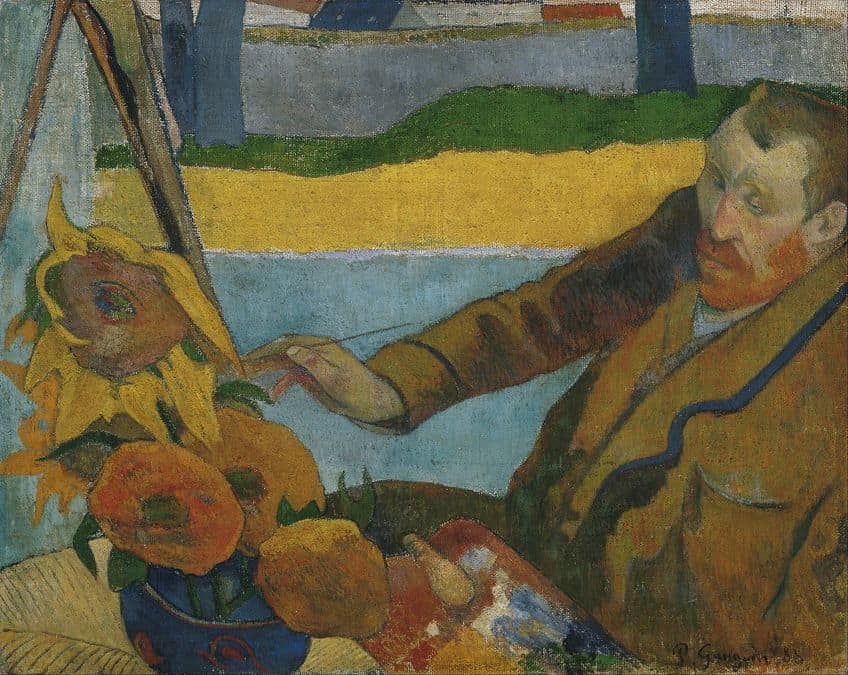
Vincent van Gogh and Paul Gauguin’s friendship is a testament to the transformative power of artistic collaboration. Despite its eventual fracture, their dynamic relationship left an indelible mark on the art world, inspiring generations of artists. Through their masterpieces, their creative dialogue continues to resonate, immortalizing the essence of their friendship. Their story reminds us of the complexities inherent in artistic relationships and the interplay between personal dynamics and creative vision. Ultimately, their friendship remains a captivating chapter in art history, cherished for its moments of unity and enduring legacy of innovation.
Frequently Asked Questions
What Led to the Collaboration Between Van Gogh and Gauguin at the Yellow House?
Van Gogh admired Gauguin’s work and believed that working together could foster artistic growth. They agreed to collaborate at the Yellow House, which Van Gogh envisioned as a utopian art colony in Arles.
What Are Some Distinct Artistic Influences That Van Gogh and Gauguin Had on Each Other?
Van Gogh was influenced by Gauguin’s use of color and symbolism, which inspired him to experiment with bolder colors and expressive brushwork. Conversely, Gauguin was prompted to explore new artistic approaches through Van Gogh’s passion and intensity in painting.
What Were the Circumstances That Led to the End of Van Gogh and Gauguin’s Friendship?
Their friendship deteriorated due to intense disagreements on artistic visions and personal conflicts. The culmination of their disputes resulted in Van Gogh’s infamous ear-cutting incident, after which Gauguin chose to leave Arles, marking the end of their collaboration.
Isabella studied at the University of Cape Town in South Africa and graduated with a Bachelor of Arts majoring in English Literature & Language and Psychology. Throughout her undergraduate years, she took Art History as an additional subject and absolutely loved it. Building on from her art history knowledge that began in high school, art has always been a particular area of fascination for her. From learning about artworks previously unknown to her, or sharpening her existing understanding of specific works, the ability to continue learning within this interesting sphere excites her greatly.
Her focal points of interest in art history encompass profiling specific artists and art movements, as it is these areas where she is able to really dig deep into the rich narrative of the art world. Additionally, she particularly enjoys exploring the different artistic styles of the 20th century, as well as the important impact that female artists have had on the development of art history.
Learn more about Isabella Meyer and the Art in Context Team.
Cite this Article
Isabella, Meyer, “Vincent van Gogh and Paul Gauguin’s Friendship – A Collaboration.” Art in Context. February 19, 2024. URL: https://artincontext.org/vincent-van-gogh-and-paul-gauguins-friendship/
Meyer, I. (2024, 19 February). Vincent van Gogh and Paul Gauguin’s Friendship – A Collaboration. Art in Context. https://artincontext.org/vincent-van-gogh-and-paul-gauguins-friendship/
Meyer, Isabella. “Vincent van Gogh and Paul Gauguin’s Friendship – A Collaboration.” Art in Context, February 19, 2024. https://artincontext.org/vincent-van-gogh-and-paul-gauguins-friendship/.


